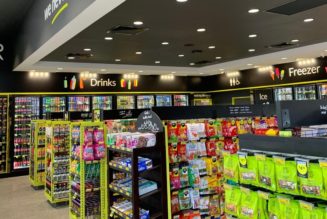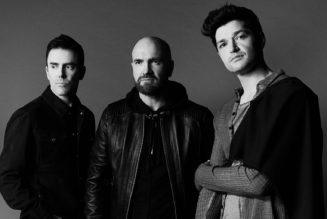
Nini Wacera (purple), Mbeki Mwalimu (brown), Narriane Nungo (extreme left), Rebecca Langley (blue), Wanjiku-Victoria Seest (face on Mbeki’s lap), Tana Gachoka and Melissa Kiplagat in a scene during the staging of “For Colored Girls Who Have Considered Suicide / When The Rainbow Is Enuf” on November 23, 2023. PHOTO | POOL
‘For Coloured Girls Who Have Considered Suicide/When The Rainbow Is Enuf’ is a play staged in Kenya before. But never before had we seen it as such a majestic masterpiece that speaks volumes about the multifaceted lives of African-American women.
For Coloured Girls has been considered a ground-breaking work since its inception in the mid-1970s up to today. It’s never lost that radical status of being a theatrical platform where Black women’s voices reveal a full range of emotional issues rarely discussed openly in public before, like sex and its correlation with gender-based violence (GBV).
For nearly a half-century, despite having a humble beginning, the show has been staged and celebrated all over the world. As its playwright, the African American spoken-word artist, Ntozake Shange put it in the preface to the published play, “We discovered [gender-based violence] is a global problem.”
It’s partly the global nature of GBV that attracted both the European Union and the Danish government to lend support to the show’s coming to Kenya where six of the seven actors are among the finest Kenyan female performing artists that we have: They include Marrianne Nungo, Mbeka Mwalimu, Melissa Kiplagat, Nini Wacera, Tana Gachoka and Wanjiku-Victoria Seest who is based in Denmark. The seventh is Rebecca Langley who is also based in Denmark but has some connection to Kenya that I don’t know.
Altogether they create an expression of women’s solidarity and joyful sisterhood. Colour-coded in their costuming, and known only as ‘Lady in Red’ or Green, Purple or Blue, that kind of anonymity illustrates the idea that each of the women reflects another emotional facet of the African American woman who’s ‘complicated’, yet committed to being silent no more and defiant in the face of every adversity that tries to keep her down and out.
The show’s director is neither Danish nor Kenyan. It was the wise decision of the show’s executive producer and artistic director, Michael Omoke, to find an awesome African-American woman, Cheryl J. Williams, to direct the play.
“It’s because the playwright [Ntozake] is an African American that Michael wanted the play to reflect an accurate cultural sensitivity,” the show’s assistant producer, Anna Skanburg told the BDLife shortly before the women came on stage and bowled us over for nearly two hours on opening night.
What Omoke managed to do is continue the ground-breaking tradition associated with the play, transforming it into a transnational production at the outset. With the playwright and director both being American, the artistic director and most of the cast and crew being Kenyan, and the funding of the play largely European, coming from the EU and Danish Embassy, what unites them is primarily their shared objectives and priorities.
All are keen to empower women, especially by raising awareness of the need to urgently bring an end to GBV.
That’s why the play’s performance on November 23 coincidentally launched two social campaigns, one being the ‘16 days of activism against gender-based violence’, the other, seeing women speak up about their issues under the hashtag #SilenceNoMore”.
Written as a series of poetic monologues, each one was woven together with interludes of ecstatic song and dance.
Meanwhile, the evening following For Coloured Girls opening night, there was another opening of a production that sounded quite similar to coloured girls. It was a series of monologues based on the true stories of women, told in an intimate style, featuring an awesome cast of Kenyan actors, including Lorna Lemi, Arther Sanye, Falky Agnes, and Hanna Wangari.
Produced by one of Kenya’s most professional female thespians, Millicent Ogutu, (who we’re happy to see back doing theatre), the script was being staged at the Ardhi Gallery.
As it turns out, the two productions were alike in theory, but in practice, very different. Both are laudable for their advocacy of women. But For Coloured Girls spoke more frankly and openly about sex while What We Have/What We Need was tame by comparison.
The structure of the production also felt skeletal, as if more work needed to be done to give the monologues more context. One also trusts that the sound system at Ardhi will be improved.
Even so, there were beautiful stories told, having been extracted from interviews and turned into monologues by Kishagha Katema. It was also good to see a man participating in a production exploring issues associated with gender since gender doesn’t mean women only. Gender is a classification, so that men, women, intersex and LGBTQ issues all fall into debates related to gender.









